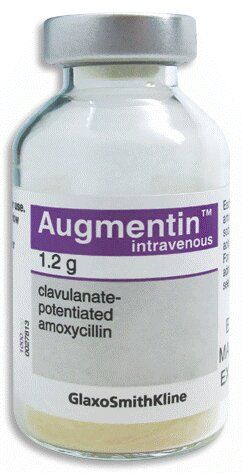Augmentin Injection: A Comprehensive Guide on Uses, Dosage, Side Effects, Description, and Recommendations
Augmentin Injection: A Comprehensive Guide on Uses, Dosage, Side Effects, Description, and Recommendations
Augmentin, the brand name for a combination of amoxicillin and clavulanic acid, is a potent antibiotic used to treat a wide range of bacterial infections. While Augmentin is commonly available in oral forms, there are situations where an intravenous (IV) injection of the medication is necessary. In this comprehensive article, we will explore Augmentin Injection, providing detailed information on its uses, appropriate dosage, potential side effects, description, and recommendations for safe and effective use.
Understanding Augmentin Injection
1. What is Augmentin (Amoxicillin/Clavulanic Acid)?
Augmentin is a combination antibiotic that contains two active ingredients: amoxicillin and clavulanic acid. Amoxicillin is a penicillin antibiotic, while clavulanic acid enhances the effectiveness of amoxicillin by preventing bacterial resistance to the antibiotic. This combination makes Augmentin effective against a broad spectrum of bacterial infections.
2. Why Augmentin Injection?
While Augmentin is available in various oral forms, including tablets and suspensions, there are cases where an intravenous (IV) injection of the medication is necessary. Augmentin Injection is administered in situations where immediate, high concentrations of the antibiotic are required, such as severe infections or cases where the patient cannot tolerate oral medications.
Uses of Augmentin Injection
Augmentin Injection is prescribed for various bacterial infections, including but not limited to:
- Lower Respiratory Tract Infections: Pneumonia and bronchitis.
- Skin and Soft Tissue Infections: Cellulitis, abscesses, and infected wounds.
- Urinary Tract Infections: Pyelonephritis and complicated urinary tract infections.
- Intra-abdominal Infections: Appendicitis and peritonitis.
- Bone and Joint Infections: Osteomyelitis and septic arthritis.
- Infections of the Ear, Nose, and Throat: Acute otitis media and sinusitis.
- Dental Infections: Abscesses and severe dental infections.
Dosage and Administration
The dosage and administration of Augmentin Injection depend on the type and severity of the infection, as well as the patient's age and weight. It is crucial to follow your healthcare provider's instructions or the prescription label carefully.
- Dosage Range: The typical adult dose of Augmentin Injection ranges from 1.2 grams to 2.2 grams, administered every 8 hours or as directed by a healthcare professional.
- Pediatric Dosing: The dosage for children varies based on their weight and the specific infection. It is determined by the healthcare provider.
Augmentin Injection is typically administered by a healthcare professional, often in a hospital or clinical setting. It is essential to complete the full course of antibiotics as prescribed, even if symptoms improve before the medication is finished.
Potential Side Effects
While Augmentin Injection is generally well-tolerated, it can cause side effects in some individuals. Common side effects may include:
- Nausea
- Diarrhea
- Vomiting
- Skin rash
- Allergic reactions (rare but serious)
If you experience severe or persistent side effects, contact your healthcare provider promptly. In case of a severe allergic reaction, seek immediate medical attention.
Description of Augmentin Injection
Augmentin Injection is a sterile, pale yellow to light brown, and clear to slightly hazy solution for intravenous use. It is supplied in vials and administered through an IV drip under the supervision of a healthcare professional.
Recommendations and Precautions
Before using Augmentin Injection, it is essential to consider the following recommendations and precautions:
- Allergies: Inform your healthcare provider if you have a history of allergies to penicillin antibiotics or any other medications.
- Medical History: Disclose your medical history, including kidney disease, liver disease, and mononucleosis, as it may impact your response to the medication.
- Pregnancy and Breastfeeding: Consult your healthcare provider if you are pregnant, planning to become pregnant, or breastfeeding. Augmentin can pass into breast milk but is generally considered safe during pregnancy when benefits outweigh risks.
Drug Interactions
Augmentin Injection may interact with other medications, potentially affecting their effectiveness or increasing the risk of side effects. Inform your healthcare provider about all medications, supplements, and herbal products you are taking, especially:
- Allopurinol
- Probenecid
- Blood thinners (e.g., warfarin)
- Methotrexate
Your healthcare provider will consider these interactions when prescribing Augmentin Injection and adjust your treatment plan as needed.
Conclusion
Augmentin Injection, a combination of amoxicillin and clavulanic acid, is a valuable tool in the treatment of various bacterial infections. Its intravenous administration allows for rapid absorption and high concentrations of the medication in the bloodstream, making it suitable for patients with severe illnesses or specific clinical needs.
It is crucial to use Augmentin Injection precisely as prescribed by a healthcare provider, complete the full course of antibiotics, and be aware of potential side effects and interactions. Augmentin Injection can be highly effective in combating infections when used appropriately, contributing to improved patient outcomes and overall well-being. Always consult with a healthcare professional for guidance on the use of Augmentin Injection and any questions or concerns related to your specific medical condition.

















No comments